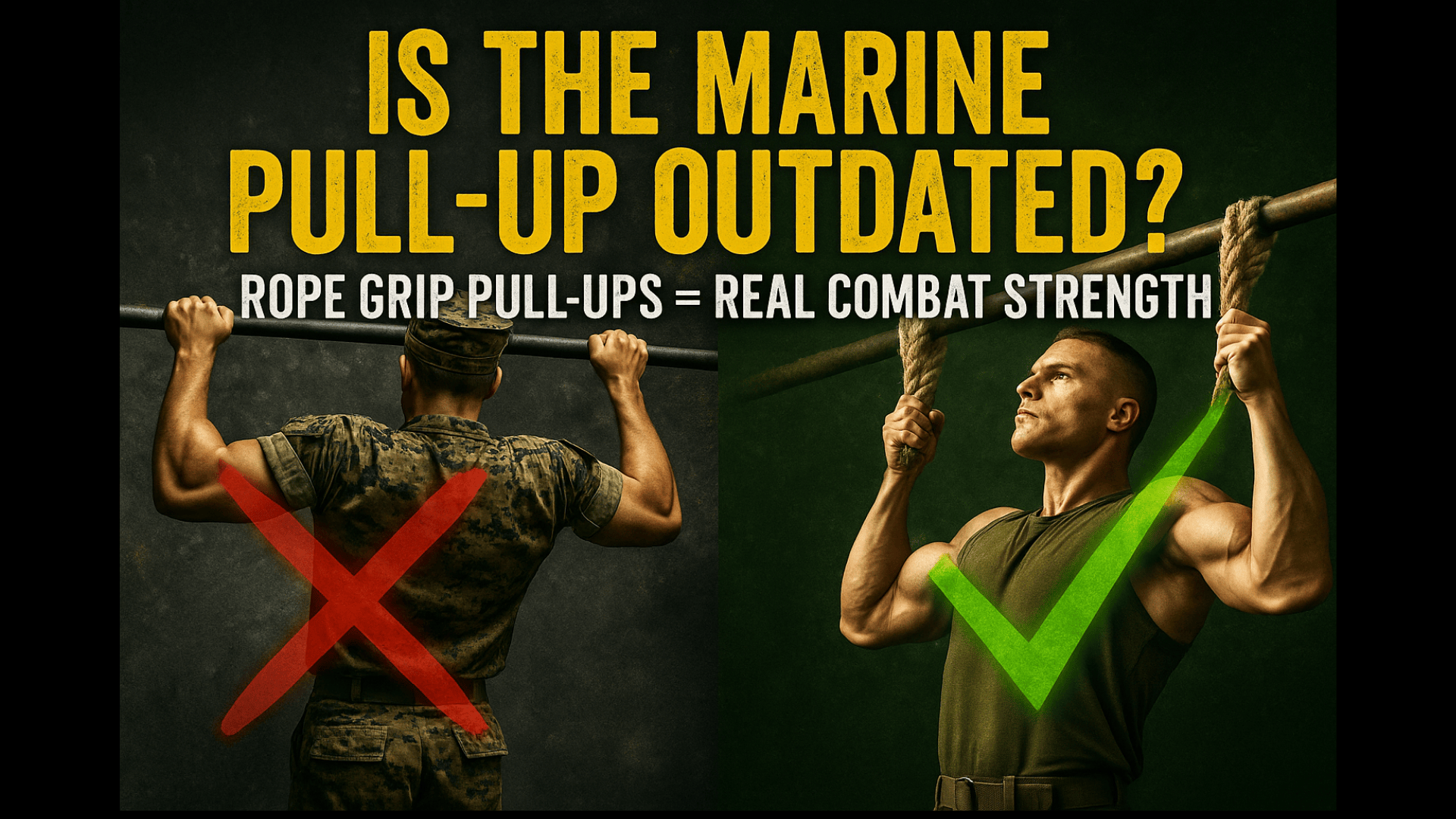Article: The Standard Pull-Up Is Dead: Why the Military Should Adopt Monkee Grip Pull-Ups as the New Test of Toughness
The Standard Pull-Up Is Dead: Why the Military Should Adopt Monkee Grip Pull-Ups as the New Test of Toughness
The Standard Pull-Up Is Dead: Why the Military Should Adopt Monkee Grip Pull-Ups as the New Test of Toughness
In the U.S. Marine Corps, pull-ups are more than a movement — they’re a badge of pride. Marines haul portable pull-up bars to fairs, schools, and recruitment events and challenge civilians to step up and prove they’ve got what it takes. The message is clear: You think you’re strong? Prove it.
But let’s ask a harder question: Is the current test still proving anything?
A standard bar pull-up is stable, predictable, and forgiving — and the battlefield is none of those things. In real-world military operations, nothing you’re gripping is guaranteed to stay still. Your hands sweat. Your gear shifts. You’re climbing ropes, scaling walls, dragging wounded teammates, and hanging onto objects that twist, move, and fight against you.
So why are we still testing soldier strength on a fixed piece of steel that prevents instability?
It’s time to make the toughest branch of the military even tougher.
Static Pull-Ups Build Strength. Rope Pull-Ups Build Survivability.
A bar lets you pull without truly fighting to stay connected. Your body learns one rigid path of movement. Yes, it builds core pulling strength — but it ignores deep stabilizers, grip endurance, tendon resilience, and the ability to fight instability under fatigue.
Monkee Grip pull-ups change that completely.
Instead of a fixed bar, soldiers must hang from friction-based rope grips — fighting to hold on with everything they have. Every rep becomes a battle against slipping, rotation, fatigue, and gravity. Forearms pump faster. Shoulders stabilize harder. The core locks in to keep the entire upper body aligned.
Where a standard pull-up activates around 25 muscles, Monkee Grip pull-ups fire over 40 — including rotational stabilizers, finger flexors, tendon anchors, and deep core muscles essential for combat tasks.
This isn’t just strength. This is combat-ready strength.
“If You Can’t Hang, You Can’t Lead.”
Special Forces missions often demand climbing ropes under load, scaling obstacles in wet conditions, or lifting a teammate when your hands are already shaking from exhaustion. In those moments, grip failure isn’t an inconvenience — it’s a liability.
Monkee Grip pull-ups simulate that fight for survival. They test who can perform under stress, not just who can move through perfect range on a perfect bar in perfect conditions.
That’s the kind of fitness the modern military claims to demand — but still isn’t fully testing.
The Marines Take Pride in Pull-Ups. Let’s Make That Pride Mean Even More.
The Marines already treat the pull-up as a symbol of grit. They bring bars everywhere they go to challenge the public. But imagine how much harder that challenge hits when you replace the stable bar with a rope-style grip that forces the body to fight for every inch.
Suddenly, the question isn’t “How many reps can you do?”
It becomes: “Can you even survive one?”
That’s not just a recruiting stunt — that’s a rite of passage.
A Tougher Test Creates Tougher Warfighters
| Standard Pull-Up | Monkee Grip Pull-Up |
|---|---|
| Works main pulling muscles | Works full upper-body kinetic chain |
| Stable and predictable | Instability tests composure under stress |
| Grip rests on solid surface | Grip must fight friction to stay alive |
| Fatigue hits lats/biceps first | Fatigue hits fingers, forearms, tendons, shoulders, core |
| Good strength builder | Superior indicator of real combat readiness |
If we want soldiers who can fight longer, carry heavier, climb faster, and never lose their grip when it matters — the old test isn’t enough.
A New Standard for a New Era
The U.S. military is rebranding around resilience, grit, and next-level toughness. It’s time for the fitness standards to evolve with that identity.
Replacing standard pull-ups with Monkee Grip pull-ups wouldn’t just raise the bar — it would remove it and force warfighters to earn every inch with friction, tension, and willpower.
Because a Marine’s strength shouldn’t just be measured by how many times they can pull themselves up.
It should be measured by how hard they can fight not to let go.
🎥 Want to see how Monkee Grip pull-ups recruit more than 40 muscles compared to a standard bar? Check out our full breakdown on YouTube.



